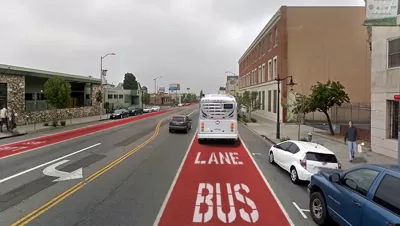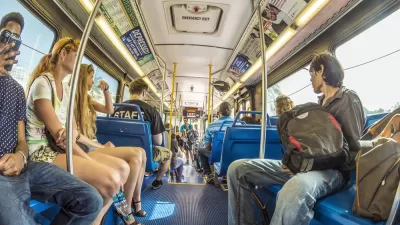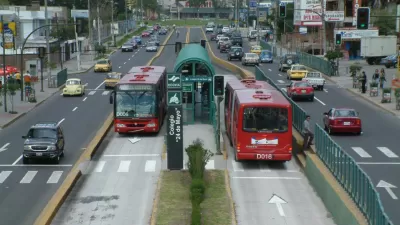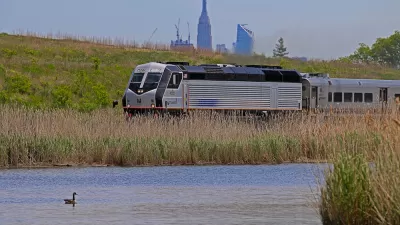More buses and trains alone won't bring back riders; other incentives are needed to boost ridership and encourage new users.

"[N]ew federal spending on transit could mean faster, cleaner, more reliable and more numerous buses and trains," but this may not be enough to bring back riders. Thomas Day argues that state and local governments must also address other issues: "ensuring that lower-income residents can afford to live in central cities, removing parking from many urban streets, and reducing or eliminating transit fares."
"To make the federal spending on transit work, [policymakers] will need to make decisions around land use and affordable housing that will be far less popular" than those around transit, Day writes. "In 2020, suburbs of the 55 U.S. cities with metropolitan populations above 1 million grew at five times the pace of urban centers, according to data analyzed by the Brookings Institution’s William Frey," putting more dependent transit riders farther away from central cities. "If there indeed is a direct relationship between lower-income residents moving away from urban centers and the decline in transit ridership, local officials will need to work harder to ensure sufficient affordable housing near public transit."
Some relatively accessible tools for improving service and getting riders back on transit do exist: "Designating lanes to allow bus rapid transit service to race by other traffic, for example, has the benefits of lower capital costs, little if any public opposition and the ability to quickly respond to demographic movements." Day also suggests eliminating fares, which, while it may not attract more commuters, benefits low-income dependent riders. If "urban leaders are willing to move forward with policies that have a real chance of luring riders back to transit, the new infrastructure spending package could transform American cities and dramatically reduce carbon emissions. "
FULL STORY: Will Billions from Washington Bring Transit Riders Back? Not Necessarily.

Study: Maui’s Plan to Convert Vacation Rentals to Long-Term Housing Could Cause Nearly $1 Billion Economic Loss
The plan would reduce visitor accommodation by 25,% resulting in 1,900 jobs lost.

North Texas Transit Leaders Tout Benefits of TOD for Growing Region
At a summit focused on transit-oriented development, policymakers discussed how North Texas’ expanded light rail system can serve as a tool for economic growth.

Why Should We Subsidize Public Transportation?
Many public transit agencies face financial stress due to rising costs, declining fare revenue, and declining subsidies. Transit advocates must provide a strong business case for increasing public transit funding.

How to Make US Trains Faster
Changes to boarding platforms and a switch to electric trains could improve U.S. passenger rail service without the added cost of high-speed rail.

Columbia’s Revitalized ‘Loop’ Is a Hub for Local Entrepreneurs
A focus on small businesses is helping a commercial corridor in Columbia, Missouri thrive.

Invasive Insect Threatens Minnesota’s Ash Forests
The Emerald Ash Borer is a rapidly spreading invasive pest threatening Minnesota’s ash trees, and homeowners are encouraged to plant diverse replacement species, avoid moving ash firewood, and monitor for signs of infestation.
Urban Design for Planners 1: Software Tools
This six-course series explores essential urban design concepts using open source software and equips planners with the tools they need to participate fully in the urban design process.
Planning for Universal Design
Learn the tools for implementing Universal Design in planning regulations.
Ascent Environmental
Borough of Carlisle
Institute for Housing and Urban Development Studies (IHS)
City of Grandview
Harvard GSD Executive Education
Toledo-Lucas County Plan Commissions
Salt Lake City
NYU Wagner Graduate School of Public Service





























